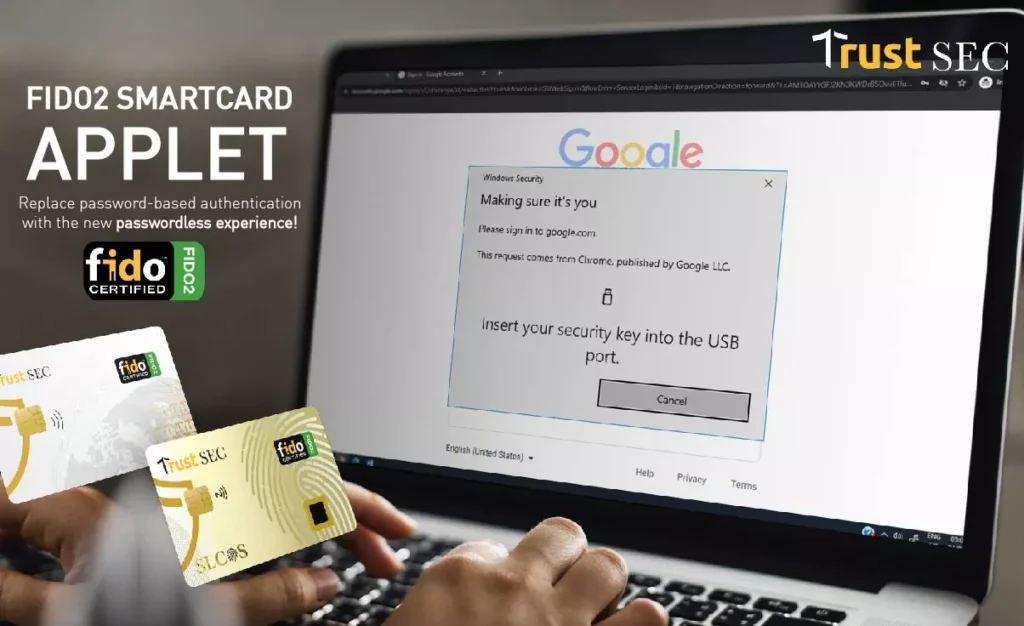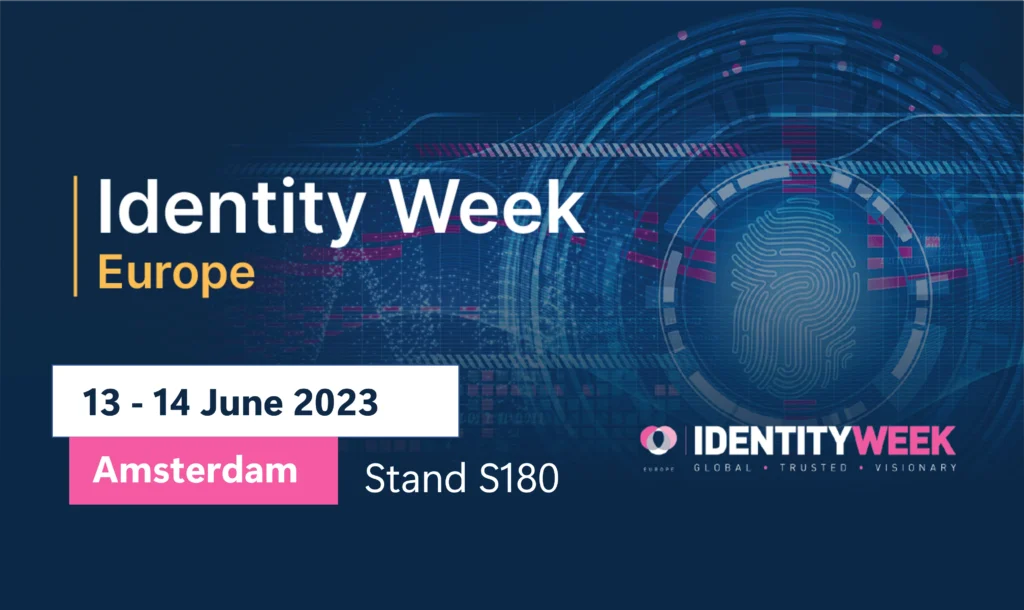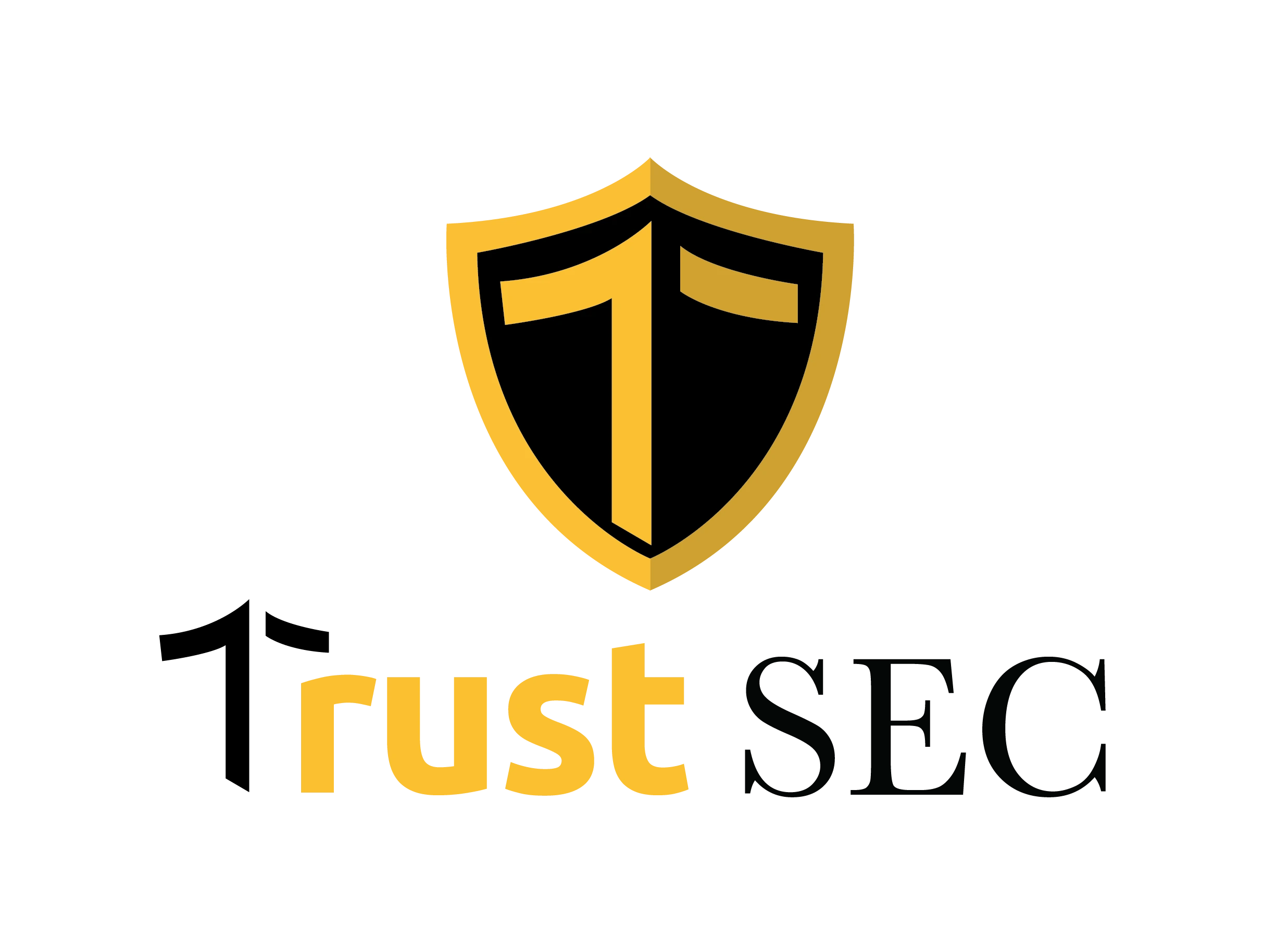TrustSEC at Identity Week Amsterdam 2023: Shaping the Future of Biometric Smartcards and Authentication
TrustSEC at Identity Week Amsterdam 2023: Shaping the Future of Biometric Smartcards and Authentication At TrustSEC, we are thrilled to recount our remarkable participation in Identity Week Amsterdam 2023, an event that has left an indelible mark on our journey of innovation. It was an opportunity for us to showcase our latest technological advancements in smart card integration and the fortification of user identities within authentication and payment systems. While we’re immensely proud of our showcase, we’re equally excited to reflect on the technical aspects that make our solutions stand out and the transformative potential they hold. Setting New Standards in Security: The Match on Card Feature Central to our presence at Identity Week was our Match on Card feature. This ingenious technology marries the security of biometric authentication with the versatility of smart cards, creating a formidable barrier against unauthorized access. The Match on Card feature represents a significant leap in security, as it ensures that biometric data remains securely stored on the card itself, eliminating the need for centralized databases. This not only enhances privacy but also reduces the risk of data breaches, setting new standards in user identity protection. Unlocking a World of Possibilities: Use Cases Our biometric smartcards have far-reaching applications. Imagine a future where secure access to physical and logical spaces is streamlined through a single, highly secure card. From corporate environments to government institutions, healthcare facilities to educational institutions, the potential applications are boundless. With our technology, organizations can implement a unified and secure authentication process, simplifying access control while fortifying security measures. Changing the Landscape of Authentication: Access Biometric Control Cards One of the standout features of our solutions is the Access Biometric Control Card. This innovative card serves as a key to a world where authentication is both seamless and impenetrable. It ensures that only authorized individuals gain access to sensitive information or physical locations. The Access Biometric Control Card merges convenience and security in a way that transforms the authentication landscape. It’s not just a card; it’s a paradigm shift. A Testament to Our Commitment Our participation in Identity Week Amsterdam 2023 is a testament to our unwavering commitment to advancing authentication and payment processes. We don’t just follow trends; we set them. We don’t merely embrace innovation; we drive it. At TrustSEC, our mission is to create a safer, more efficient digital world, and events like Identity Week empower us to turn that mission into a reality.
TrustSEC at Seamless Saudi Arabia 2023

TrustSEC at Seamless Saudi Arabia 2023: Transforming Fintech and Authentication – September 4-5 At TrustSEC, we’re excited to share our incredible experience at Seamless Saudi Arabia 2023, held on September 4 and 5. This event offered a unique glimpse into Saudi Arabia’s technological transformation and the adoption of cutting-edge trends in fintech, payment, and authentication. Saudi Arabia’s Tech Revolution: A Path to Digital Transformation Saudi Arabia is experiencing a remarkable technological revolution. The nation is not only embracing but leading the charge in adopting the latest trends in fintech, payment systems, and authentication methods. With a strong focus on improving the lives of its citizens, the government is welcoming new ideas and innovations that facilitate this transformation. TrustSEC’s participation in Seamless Saudi Arabia was made feasible through co-financing obtained within the framework of the project entitled Participation in the event co-financed under the project titled: “Strengthening the position of the Regional Economy, Western Pomerania – Steering for innovation”; implemented in under the Regional Operational Program of the West Pomeranian Voivodeship 2014-2020 The primary objective of this initiative is to provide essential support to Polish enterprises, facilitating their expansion of professional networks, exploration of new growth opportunities, and enhancement of their corporate presence and business operations in diverse regions. By strategically leveraging this co-financing opportunity, TrustSEC actively engaged in the Seamless Saudi Arabia event, in alignment with our core mission to facilitate and catalyze growth and development for Polish businesses on the global stage. This collaborative undertaking underscores the steadfast commitment of both TrustSEC and the project to empower enterprises, enabling them to capitalize on international opportunities and fortify their economic positions within an intensely competitive global market. An Open Market for Biometric Smartcards TrustSEC sees Saudi Arabia as an open market ripe for the adoption of advanced technologies, particularly in the realm of access control and biometric smartcards. These technologies play a pivotal role in securing users’ digital presence across both physical and logical access points, as well as web applications. Enhancing Day-to-Day Operations for Citizens The importance of securing day-to-day operations cannot be overstated. With digitalization becoming the norm, securing access to essential services and data is paramount. TrustSEC believes that biometric smartcards offer a seamless and highly secure solution for these challenges, ensuring that citizens’ interactions with digital systems are not just convenient but also safe. TrustSEC’s Vision for a Safer Digital Future Our participation in Seamless Saudi Arabia 2023 reflects our vision for a safer digital future. We believe that by offering innovative solutions like biometric smartcards, we can contribute to Saudi Arabia’s journey of digital transformation and secure the digital lives of its citizens. © 2023 TrustSEC SP. Z O.O. uczestniczy w zadaniu “Organizacja indywidualnych misji wyjazdowych i udział w Targach” w ramach projektu pn. “Wzmocnienie pozycji regionalnej gospodarki, Pomorze Zachodnie – Ster na innowacje”, realizowanego w ramach Regionalnego Programu Operacyjnego Województwa Zachodniopomorskiego 2014-2020.
FIDO2 Smartcard Applet

FIDO2 Smartcard Applet Smart cards have become a fast-growing market due to the higher demand for tighter security measures. It also became mandatory in governmental and fintech services’ digital transformation. Smartcards now contain end-users personal data (e.g. health, social security, digital identity, crypto transactions, etc) FIDO2 Applet on Java Card Java Card: A Multi-Application Operating System for Smart Cards It allows applets) to be loaded and securely executed on-chip card systems. Java Card is a very small subset of Java platforms that can be used on embedded devices such as smart cards with small memory and CPU footprint devices. Java Card has been around for over 20 years now. It is a mature smart card operating system. Applet load, initialization, personalization, and deletion heavily rely on Global Platform specifications. Java Card is an open, multi-application operating system for smart cards. Diverse parties can develop applications for the same smart card using their respective Java programming skills. The resulting applets run on the same card and co-reside independently. Thus, applications from various vendors can be combined after being separately developed. Fast Identity Online FIDO2 is the umbrella term for a passwordless authentication open standard developed by the Fast Identity Online (FIDO) Alliance, an industry consortium comprised of technology firms and other service providers. FIDO 2 consists of two core components. The first is the WebAuthn API, which industry leaders are incorporating into their browsers, including Chrome, Edge, Mozilla, and WebKit. Second, there’s the Client to Authenticator (CTAP) protocol that provides FIDO 2-capable devices an interface for external authenticators via NFC, USB, or Bluetooth. Solutions built atop FIDO2 undergo rigorous certification to ensure that user credentials are decentralized, isolated and encrypted on users’ personal devices. TrustSEC FIDO2 Applet Based on the above, TrustSEC offers its FIDO2 java card Applet to all business owners who have a smartcard solution integrated with web-based services and would like to secure their end-users logins over the web. It corresponds to the requirements for secure authentication that are integrated/activated with smartcards and could exist on the card in addition to other applets to help businesses provide a secure turnkey solution. It could easily be intended for production over any java smart card operating system. FIDO2 Smartcards could be a 2-factor-authentication or Multi-factor authenticator based on the biometric feature addition Something you are ( Fingerprint ), however, the 2Fa FIDO2 Smartcards will be a combination of something you have (the smart card) with something you know (a secret, the smart card PIN). FIDO2 Authentication Process The user registers to a web application or services, His/Her registration generates a public key and a private key. When requesting access to the web service, a challenge is generated, then the challenge is signed and returned using the keys pairing part over the smartcard which is created in the smart card and never leave it. When the right key pair is used, the user can successfully log in. Also, a great advantage of using one FIDO2 Authenticator Applet is the possibility of multiple logins to different applications, while only one PIN/fingerprint is required to enable access to the authenticator. FIDO2 Smartcard Applet Security keys Check TrustSEC Security keys range to choose from single-factor, two-factor, or multi-factor keys for secure login, over different platforms for different verticals with a variety of authentication scenarios. Fido2 Security Keys Biometric Fido2 Smartcard TrustSEC Fido2 Smartcard What is FIDO2 Smartcard Applet? Smart cards have become a fast-growing market due to the higher demand for tighter security measures. It also became mandatory in governmental and fintech services’ digital transformation. Smartcards now contain end-users personal data (e.g. health, social security, digital identity, crypto transactions, etc) FIDO2 Applet on Java Card Java Card: A Multi-Application Operating System for Smart Cards It allows applets) to be loaded and securely executed on-chip card systems. Java Card is a very small subset of Java platforms that can be used on embedded devices such as smart cards with small memory and CPU footprint devices. Java Card has been around for over 20 years now. It is a mature smart card operating system. Applet load, initialization, personalization, and deletion heavily rely on Global Platform specifications. Java Card is an open, multi-application operating system for smart cards. Diverse parties can develop applications for the same smart card using their respective Java programming skills. The resulting applets run on the same card and co-reside independently. Thus, applications from various vendors can be combined after being separately developed. Fast Identity Online FIDO2 is the umbrella term for a password less authentication open standard developed by the Fast Identity Online (FIDO) Alliance, an industry consortium comprised of technology firms and other service providers. FIDO 2 consists of two core components. The first is the WebAuthn API, which industry leaders are incorporating into their browsers, including Chrome, Edge, Mozilla, and WebKit. Second, there’s the Client to Authenticator (CTAP) protocol that provides FIDO 2-capable devices an interface for external authenticators via NFC, USB, or Bluetooth. Solutions built atop FIDO2 undergo rigorous certification to ensure that user credentials are decentralized, isolated and encrypted on users’ personal devices. TrustSEC FIDO2 Applet Based on the above, TrustSEC offers its FIDO2 java card Applet to all business owners who have a smartcard solution integrated with web-based services and would like to secure their end-users logins over the web. It corresponds to the requirements for secure authentication that are integrated/activated with smartcards and could exist on the card in addition to other applets to help businesses provide a secure turnkey solution. It could easily be intended for production over any java smart card operating system. FIDO2 Smartcards could be a 2-factor-authentication or Multi-factor authenticator based on the biometric feature addition Something you are ( Fingerprint ), however, the 2Fa FIDO2 Smartcards will be a combination of something you have (the smart card) with something you know (a secret, the smart card PIN). FIDO2 Authentication Process The user registers to a web application or services, His/Her registration generates a public key and a private key. When requesting access to the web service, a
Biometric Access control cards

TrustSEC Biometric Access control cards release We are happy to announce the release of TrustSEC Bio Access control card. The Access control card will facilitate the users’ authentication experience with guaranteeing high-security measures. Organizations across every industry seek dependable, practical, and secure solutions for identification. If you think Physical and logical options are broad, the choice can be overwhelming. TrustSEC’s Bio access control cards combine both functionalities. This solution simplifies the authentication process, by successfully authenticating the person’s identity over physical access points and logical access with the user’s unique fingerprint. Access control physical vs. logical access Access control is the selective restriction of access to a location or other resource. It is used to regulate individuals’ views, access, or use of specific resources and/or information. The two main types are physical and logical. Physical access control is the selective restriction of access to a site, which is often performed through a range of security mechanisms that regulate and track who enters and leaves a facility. smartcards are one of the top technologies used in Physical access control systems. Logical access control is managing/restricting virtual access to data; it includes identification, authentication, and authorization protocols to identify who has the right to access a specific software or hardware. Logical access control mechanisms are dependent on many factors, such as passwords (Something you know), smart cards, tokens (something you have), and biometrics (something you are). The three factors when used together provide the highest security levels. Biometric Authentication on the card The biometric technology used on the cards depends on the Match-on-Card (MoC) feature that will store the holder’s biometric data and protect such communications with encryption. TrustSEC Biometric smartcards demonstrate a high level of flexibility as the technology used within the card is adaptable enough to integrate with any applet, is durable enough to last for many years, and provides user-friendliness; the card’s portability makes it easy for users to carry in their wallet. In addition to the automated Identification, and Access Control Solution, other applets could also be Personalized on the card for example applet for Secure Document Exchange. The solution would be vital for governments, banks, and enterprises where high-security measures are a must. TrustSEC Bio Access control cards’ reliability and durability will replace the complexity of the day-to-day operations with just one card. For more information, please contact us at info@trustsec.net
TrustSEC at Identity Week Amsterdam 2023

At TrustSEC, we are thrilled to recount our remarkable participation in Identity Week Amsterdam 2023, an event that has left an indelible mark on our journey of innovation. It was an opportunity for us to showcase our latest technological advancements in smart card integration and the fortification of user identities within authentication and payment systems. While we’re immensely proud of our showcase, we’re equally excited to reflect on the technical aspects that make our solutions stand out and the transformative potential they hold. Setting New Standards in Security: The Match on Card Feature Central to our presence at Identity Week was our Match on Card feature. This ingenious technology marries the security of biometric authentication with the versatility of smart cards, creating a formidable barrier against unauthorized access. The Match on Card feature represents a significant leap in security, as it ensures that biometric data remains securely stored on the card itself, eliminating the need for centralized databases. This not only enhances privacy but also reduces the risk of data breaches, setting new standards in user identity protection. Unlocking a World of Possibilities: Use Cases Our biometric smartcards have far-reaching applications. Imagine a future where secure access to physical and logical spaces is streamlined through a single, highly secure card. From corporate environments to government institutions, healthcare facilities to educational institutions, the potential applications are boundless. With our technology, organizations can implement a unified and secure authentication process, simplifying access control while fortifying security measures. Changing the Landscape of Authentication: Access Biometric Control Cards One of the standout features of our solutions is the Access Biometric Control Card. This innovative card serves as a key to a world where authentication is both seamless and impenetrable. It ensures that only authorized individuals gain access to sensitive information or physical locations. The Access Biometric Control Card merges convenience and security in a way that transforms the authentication landscape. It’s not just a card; it’s a paradigm shift. A Testament to Our Commitment Our participation in Identity Week Amsterdam 2023 is a testament to our unwavering commitment to advancing authentication and payment processes. We don’t just follow trends; we set them. We don’t merely embrace innovation; we drive it. At TrustSEC, our mission is to create a safer, more efficient digital world, and events like Identity Week empower us to turn that mission into a reality.
TrustSEC at Seamless Saudi Arabia 2023: Transforming Fintech and Authentication – September 4-5

At TrustSEC, we’re excited to share our incredible experience at Seamless Saudi Arabia 2023, held on September 4 and 5. This event offered a unique glimpse into Saudi Arabia’s technological transformation and the adoption of cutting-edge trends in fintech, payment, and authentication. Saudi Arabia’s Tech Revolution: A Path to Digital Transformation Saudi Arabia is experiencing a remarkable technological revolution. The nation is not only embracing but leading the charge in adopting the latest trends in fintech, payment systems, and authentication methods. With a strong focus on improving the lives of its citizens, the government is welcoming new ideas and innovations that facilitate this transformation. TrustSEC’s participation in Seamless Saudi Arabia was made feasible through co-financing obtained within the framework of the project entitled Participation in the event co-financed under the project titled: “Strengthening the position of the Regional Economy, Western Pomerania – Steering for innovation”; implemented in under the Regional Operational Program of the West Pomeranian Voivodeship 2014-2020 The primary objective of this initiative is to provide essential support to Polish enterprises, facilitating their expansion of professional networks, exploration of new growth opportunities, and enhancement of their corporate presence and business operations in diverse regions. By strategically leveraging this co-financing opportunity, TrustSEC actively engaged in the Seamless Saudi Arabia event, in alignment with our core mission to facilitate and catalyze growth and development for Polish businesses on the global stage. This collaborative undertaking underscores the steadfast commitment of both TrustSEC and the project to empower enterprises, enabling them to capitalize on international opportunities and fortify their economic positions within an intensely competitive global market. An Open Market for Biometric Smartcards TrustSEC sees Saudi Arabia as an open market ripe for the adoption of advanced technologies, particularly in the realm of access control and biometric smartcards. These technologies play a pivotal role in securing users’ digital presence across both physical and logical access points, as well as web applications. Enhancing Day-to-Day Operations for Citizens The importance of securing day-to-day operations cannot be overstated. With digitalization becoming the norm, securing access to essential services and data is paramount. TrustSEC believes that biometric smartcards offer a seamless and highly secure solution for these challenges, ensuring that citizens’ interactions with digital systems are not just convenient but also safe. TrustSEC’s Vision for a Safer Digital Future Our participation in Seamless Saudi Arabia 2023 reflects our vision for a safer digital future. We believe that by offering innovative solutions like biometric smartcards, we can contribute to Saudi Arabia’s journey of digital transformation and secure the digital lives of its citizens.
